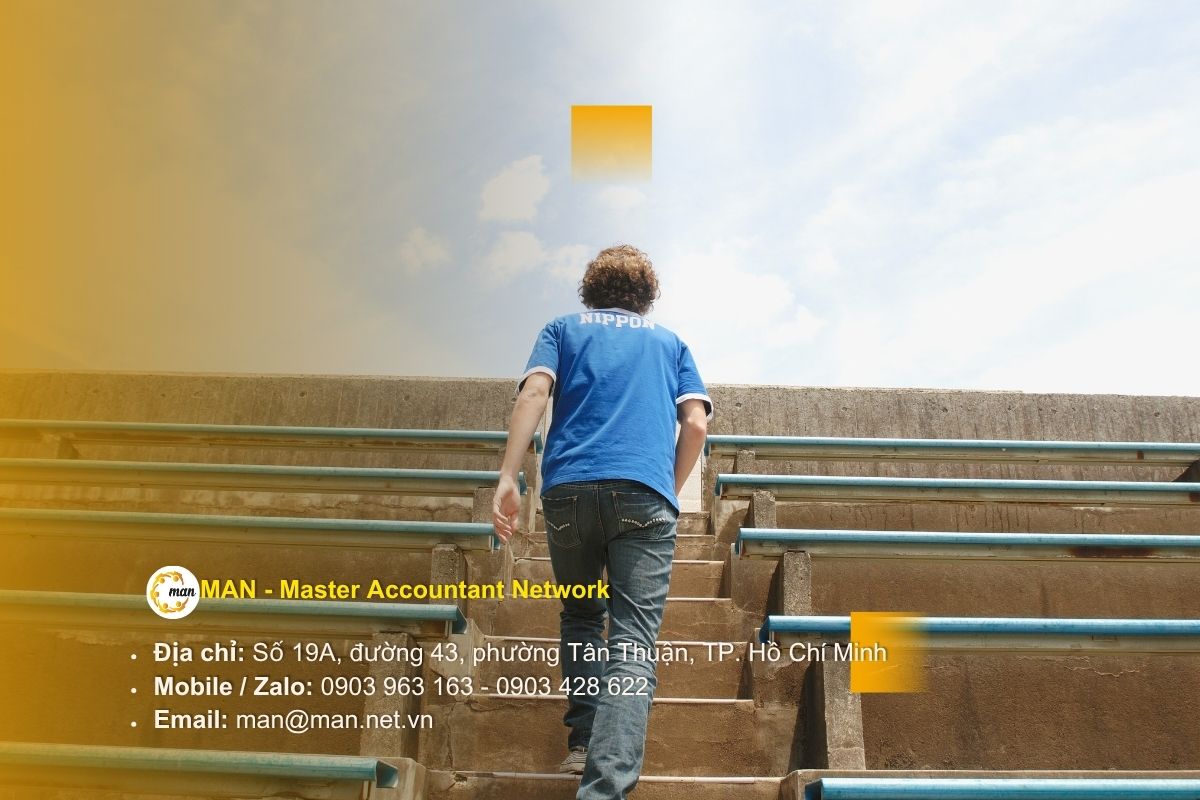Kê khai giao dịch liên kết trên HTKK theo Nghị định 132/2020/NĐ-CP không chỉ là thủ tục bắt buộc mà còn là “lá chắn” giúp doanh nghiệp giảm thiểu rủi ro truy thu và xử phạt. Tuy nhiên, không phải mọi trường hợp phát sinh giao dịch liên kết đều phải kê khai; doanh nghiệp có thể được miễn trừ nếu đáp ứng đủ điều kiện các quy định tại Nghị định 132/2020/NĐ-CP. Bài viết này sẽ giúp doanh nghiệp nắm rõ quy định, cũng như các trường hợp nào phải kê khai giao dịch liên kết trên HTKK theo Nghị định 132/2020/NĐ-CP và trường hợp nào được miễn trừ kê khai giao dịch liên kết trên HTKK theo Nghị định 132/2020/NĐ-CP.
Board: Summary of cases of declaring related-party transactions on the HTKK according to Decree 132/2020/ND-CP and exemption from preparing the dossier
| In case 02 enterprises have affiliated and GDLK relationships | Declaration regulations and declaration exemptions | ||||
| Information on affiliate relationships and GDLK (Form No. 01) | GDLK valuation profile (Including: National profile; Global profile; Cross-border profit report) | ||||
| Section I | Section II | Section III | Section IV | ||
| Enterprise A has domestic or foreign capital and enterprise B has foreign capital in Vietnam. Both enterprises have the same corporate income tax rate 20%, neither party enjoys corporate income tax incentives. | Establish | Establish | Free | Free | Free |
| Enterprise A has foreign capital located in Vietnam, enterprise B has foreign capital located outside of Vietnam. Incurring related transactions, enterprise A has annual revenue of less than 50 billion and the total value of all related transactions arising in the period is less than 30 billion VND/year. | Establish | Establish | Establish | Establish | Free |
| Enterprise A has an affiliated relationship with enterprise B. Both A and B have signed an advance pricing agreement (APA) according to Circular 201/2013/TT-BTC. | Establish | Establish | Establish | Establish | Free |
| Enterprise A has domestic or foreign capital, located in Vietnam. Enterprise B is foreign-owned and located outside of Vietnam. But A business has simple functions, does not bear inventory risks and does not incur any other costs. With annual revenue under 200 billion VND (not including revenue from exploitation and use of intangible assets such as royalties) has EBIT of each industry: Distribution industry from 5% and above Manufacturing industry from 10% or more Processing industry from 15% or more | Establish | Establish | Establish | Establish | Free |
| Both businesses have related relationships other than the above cases. | Establish | Establish | Establish | Establish | Establish |
What is the declaration of related party transactions on the HTKK according to Decree 132/2020/ND-CP?
Kê khai giao dịch liên kết trên HTKK theo Nghị định 132/2020/NĐ-CP là việc doanh nghiệp thực hiện khai báo các giao dịch phát sinh với bên liên kết trực tiếp trên phần mềm Hỗ trợ kê khai thuế (HTKK), kèm theo tờ khai quyết toán thuế thu nhập doanh nghiệp. Trong quá trình này, doanh nghiệp đăng nhập vào HTKK, chọn tờ khai quyết toán thuế TNDN mẫu 03/TNDN, tích chọn mục “Có phát sinh giao dịch liên kết” và điền đầy đủ thông tin vào phụ lục theo yêu cầu. Hình thức kê khai giao dịch liên kết trên HTKK theo Nghị định 132/2020/NĐ-CP này giúp dữ liệu được gửi trực tiếp tới cơ quan thuế một cách nhanh chóng, chính xác và tuân thủ đúng quy định pháp luật. Việc kê khai giao dịch liên kết trên HTKK theo Nghị định 132/2020/NĐ-CP giúp đồng bộ dữ liệu và giảm thiểu sai sót so với điền thủ công.
According to the provisions of Decree 132/2020/ND-CP, all enterprises that have related-party transactions during the tax period are obliged to declare related-party transactions on the tax declaration system according to Decree 132/2020/ND-CP, specifically:
- Identify, summarize and declare in Form 01, 02, 03 on HTKK.
- Submit with corporate income tax return.
- In case of exemption (according to conditions on revenue, interest, or domestic transactions with the same tax rate), it is still necessary to mark the exemption information on the tax declaration to ensure transparency.
How to fill out the Appendix to declare related party transactions on the HTKK according to Decree 132/2020/ND-CP
To complete the Appendix to declare related-party transactions on the HTKK according to Decree 132/2020/ND-CP, enterprises need to fully prepare information and enter data on the software.

In the process of declaring related-party transactions on the HTKK according to Decree 132/2020/ND-CP, the first important preparation step is that the enterprise must make a complete list of related parties according to the criteria in Article 5 of Decree 132/2020/ND-CP. This list must clearly state the name of the enterprise, tax code (MST), country or territory where the related party registers to operate to ensure transparency and compliance with regulations.
When declaring related-party transactions on the HTKK according to Decree 132/2020/ND-CP, enterprises need to fully summarize the value of each transaction arising in the tax period. These transactions include:
- Buying and selling goods, providing services, borrowing or lending capital
- Transfer or license the use of tangible and intangible assets (such as copyrights, patents, trademarks).
At the same time, enterprises must determine the transaction pricing method according to the principle of independent transactions prescribed in Article 7 of Decree 132/2020/ND-CP. Some common methods include: Comparing independent transaction prices (CUP), resale price (RPM), cost plus profit (CPM), comparing net profit (TNMM) or profit allocation (PSM).
Procedure for filling out the Appendix to declare related-party transactions on the HTKK according to Decree 132/2020/ND-CP
To help businesses visualize the implementation steps, below is a table of procedures for declaring related-party transactions on the HTKK according to Decree 132/2020/ND-CP. This table summarizes each step in detail, from opening the HTKK software, choosing the appropriate appendix template, entering related-party transaction data to exporting and submitting via the General Department of Taxation's electronic information portal.

| Step | Implementation content | Important Note |
| 1 | Open HTKK software and select corporate income tax settlement declaration form 03/TNDN. | Check the box “There are related transactions” to activate the Declaration Appendix. |
| 2 | Select the correct declaration form according to regulations. Form No. 01: Information about the related party. Form No. 02: Information on related transactions. Form No. 03: Information on exemption from filing declarations. | Make sure to select the correct Appendix form according to each declaration or exemption case. |
| 3 | Enter detailed data in each Appendix: Related party information; Type of transaction; Description of transaction content; Transaction value; Applicable valuation method. | Must comply with the principle of independent trading and valuation methods according to Article 7 of Decree 132/2020/ND-CP. |
| 4 | Save the declaration data and carefully check each declared information item. | Review for errors, ensure figures match financial statements and associated transaction records. |
| 5 | Submit via the General Department of Taxation's electronic portal. | Submit within the deadline specified in Article 18 of Decree 132/2020/ND-CP to avoid administrative penalties. |
Thus, complying with the correct procedures for declaring related-party transactions on the HTKK according to Decree 132/2020/ND-CP not only helps businesses fulfill their tax obligations on time but also minimizes the risk of errors and avoids penalties during inspections and audits. Businesses need to maintain consistency between declared data, financial reports and related-party transaction records to ensure transparency and credibility in tax administration.
Appendix I related party transactions on the stock exchange according to Decree 132/2020/ND-CP
Section I: Information of related parties
In the appendix declaring related-party transactions, enterprises need to provide full information identifying related parties, based on the criteria for determining related-party relationships specified in Article 5 of Decree 132/2020/ND-CP.
In this section, taxpayers must declare related-party transactions on the HTKK according to Decree 132/2020/ND-CP detailing the name of each related party, along with the tax code (MST), the country or territory where the operation is registered, and basic contact information (if any). At the same time, it is necessary to identify and express the form of related-party relationship according to the prescribed symbol system (A, B, C, D, Đ, E, G, H, I, K), in which each symbol reflects a specific type of relationship such as: capital ownership, control rights, loan guarantees or economic dependence.
Fully and accurately declaring related party transactions in Section I is important, helping tax authorities clearly identify the network of related parties of the enterprise. This is the basis for comparing and checking the reasonableness of transaction prices, while ensuring that enterprises comply with the principle of transparency as well as the provisions of Decree 132/2020/ND-CP. When making declarations, taxpayers need to pay special attention to the following points:
- In case the affiliate in Vietnam is an organization, the declaration information must be recorded according to the business registration certificate. If it is an individual, use the information on the passport or citizen identification card to declare.
- In cases where the related party is an organization or individual outside the territory of Vietnam, the declared information must be based on documents identifying the related relationship, such as transaction agreements, contracts or business registration certificates.
- If you are an organization or individual operating in Vietnam, you need to fill in the full Tax Code (MST).
- In case the related party is an organization or individual outside the territory of Vietnam, it is necessary to fully declare the tax code and taxpayer identification code; if not available (must clearly state the reason).
Section II: Cases exempted from declaration and exemption from preparing transfer pricing documents
Cases where enterprises are exempted from the obligation to declare related-party transactions or from preparing documents to determine the price of related-party transactions are specifically regulated as follows:
Case 1: Exemption from declaring related transactions on the HTKK in Section III and Section IV
Taxpayers are exempted from declaring related-party transactions on the HTKK according to Decree 132/2020/ND-CP in Sections III and IV of Appendix I on related-party transactions, and are also exempted from preparing documents to determine the price of related-party transactions if during the tax period, there are only transactions with related parties that are CIT payers in Vietnam, on the condition that both parties apply the same CIT rate and neither party enjoys tax incentives.
Case 2: Exemption from preparing transfer pricing documents
Taxpayers are exempted from preparing transfer pricing documents in the following cases:
- There are related party transactions but the total revenue in the tax period is less than VND 50 billion/year and the total value of all related party transactions arising in the period is less than VND 30 billion/year.
- Signed an advance pricing agreement (APA) according to Circular 201/2013/TT-BTC;
- Enterprises carry out business activities with basic functions (production according to orders, therefore, do not bear inventory risks). In addition, they do not have to bear any costs arising during the operation process. In addition, they must have annual revenue of less than 200 billion VND (not including revenue from exploitation and use of intangible assets such as royalties), as well as EBIT regulations of each industry: Distribution industry from 5% or more; Manufacturing industry from 10% or more; Processing industry from 15% or more
Section III: Information on determining transfer pricing
In the process of declaring related-party transactions on the HTKK according to Decree 132/2020/ND-CP, Section III of the appendix is used for enterprises to present the method of determining prices for transactions arising with related parties, ensuring compliance with the principle of independent transactions according to Articles 6 and 7 of Decree 132/2020/ND-CP.
In this section, taxpayers must clearly state the method of determining the price applied for each type of transaction, such as the comparable uncontrolled price method (CUP), resale price method (RPM), cost plus profit method (CPM), net profit comparison method (TNMM) or profit allocation method (PSM). At the same time, enterprises must provide information on the data sources used for reconciliation, including financial statements, commercial databases, industry information or data from similar independent transactions.
In addition, Section III is also where enterprises record the results of price comparison or profit margin between related-party transactions and independent transactions, and explain the reasons for any differences (if any). In cases where they are exempted from filing according to Article 19 of Decree 132/2020/ND-CP, taxpayers must still tick the corresponding box for the tax authority to record.
Full, transparent and accurate declaration in Section III not only helps tax authorities assess the reasonableness of transfer pricing but also serves as a basis to protect enterprises from the risk of being taxed or administratively sanctioned.
Section IV: Business results after determining transfer pricing
In the declaration of related party transactions on the HTKK according to Decree 132/2020/ND-CP, this is the part that shows the profit picture of the enterprise after applying the valuation method according to the principle of independent transactions (declared in Section III) and making the necessary transfer pricing adjustments. The data in this section is considered the "final result", used to compare with the corporate income tax finalization declaration, so it is necessary to ensure consistency with the financial statements and the entire working records of the enterprise.
When preparing Section IV, the enterprise needs to start from the original accounting data of the period, including: net revenue, cost of goods sold, selling and administrative expenses, financial expenses, income and other expenses. From there, the enterprise proceeds to separate between related transactions and independent transactions to determine the scope that needs to be adjusted.
Based on the selected method (CUP, RPM, CPM, TNMM, PSM) and the independent comparison range, the enterprise calculates the price adjustment or profit margin for each transaction group. The adjustment may include: increasing affiliate revenue, reducing cost of goods sold or internal service costs, adjusting royalties, or internal interest expenses... to bring the results to a price and profit margin consistent with the principle of independent transactions.
After making adjustments, the enterprise re-establishes the profit and loss report for the tax period, clearly showing the following post-adjustment indicators: revenue, cost of goods sold, gross profit, deductible selling and administrative expenses, financial expenses (note the limit on loan interest deduction according to current regulations), other income, EBIT, EBITDA and taxable income after transfer pricing adjustment.
Cases of declaring related-party transactions on the HTKK according to Decree 132/2020/ND-CP and exemption from preparing a dossier
To help businesses easily distinguish between cases that must declare and cases that are exempted from declaring related-party transactions, below is a summary table based on the provisions of Decree 132/2020/ND-CP. The table clearly shows:

- Information on related relationships and related transactions (Form No. 01)
- Transfer pricing determination dossier (including: National dossier, Global dossier, Country-by-Country profit report)
- Items I, II, III, IV respectively in the declaration
- Specific situations: Domestic enterprise – foreign enterprise, same tax rate or tax incentives, small revenue, signed APA or meeting minimum EBIT threshold.
The table below will help businesses quickly identify whether they are eligible for declaration exemption in each case:
| In case 02 enterprises have affiliated and GDLK relationships | Declaration regulations and declaration exemptions | ||||
| Information on affiliate relationships and GDLK (Form No. 01) | GDLK valuation profile (Including: National profile; Global profile; Cross-border profit report) | ||||
| Section I | Section II | Section III | Section IV | ||
| Enterprise A has domestic or foreign capital and enterprise B has foreign capital in Vietnam. Both enterprises have the same corporate income tax rate 20%, neither party enjoys corporate income tax incentives. | Establish | Establish | Free | Free | Free |
| Enterprise A has foreign capital located in Vietnam, enterprise B has foreign capital located outside of Vietnam. Incurring related transactions, enterprise A has annual revenue of less than 50 billion and the total value of all related transactions arising in the period is less than 30 billion VND/year. | Establish | Establish | Establish | Establish | Free |
| Enterprise A has an affiliated relationship with enterprise B. Both A and B have signed an advance pricing agreement (APA) according to Circular 201/2013/TT-BTC. | Establish | Establish | Establish | Establish | Free |
| Enterprise A has domestic or foreign capital, located in Vietnam. Enterprise B is foreign-owned and located outside of Vietnam. But A business has simple functions, does not bear inventory risks and does not incur any other costs. With annual revenue under 200 billion VND (not including revenue from exploitation and use of intangible assets such as royalties) has EBIT of each industry: Distribution industry from 5% and above Manufacturing industry from 10% or more Processing industry from 15% or more | Establish | Establish | Establish | Establish | Free |
| Both businesses have related relationships other than the above cases. | Establish | Establish | Establish | Establish | Establish |
Thus, the above table has fully summarized the cases of declaring related-party transactions on the HTKK according to Decree 132/2020/ND-CP and exempting the preparation of the dossier in practice. Declaring related-party transactions on the HTKK according to Decree 132/2020/ND-CP not only helps businesses meet legal requirements, but also creates a transparent basis for tax management. At the same time, understanding the exempted cases will help optimize resources, limit risks and improve compliance efficiency.
Time to submit the Annex to related party transactions according to Decree 132/2020/ND-CP
Pursuant to the provisions of Clause 3, Article 18 Decree 132/2020/ND-CP regulations on taxpayers with related party transactions within the scope of regulation at Decree 132/2020/ND-CP is responsible for declaring information on related relationships and related transactions according to the Appendix issued under Decree 132/2020/ND-CP and submitting it with the Corporate Income Tax Finalization Declaration.
An important point that businesses need to note is that the Transfer Pricing Declaration must be submitted together with the annual Corporate Income Tax Finalization Declaration. Thus, if the business applies the calendar year, the deadline for submission is March 31 of the following year. Late submission may result in the business being penalized according to regulations, so it is necessary to have a plan to avoid late submission.
Conclude
In short, understanding the regulations on declaring related-party transactions on the HTKK according to Decree 132/2020/ND-CP helps businesses both comply with the law and avoid tax risks during inspections and audits. To ensure accurate declarations and take full advantage of exemptions, businesses should have a strict control process and consult experts. If you are looking for the optimal solution in declaring and managing related-party transactions, let MAN – Master Accountant Network accompany you in building a standard and transparent profile.
Contact information MAN – Master Accountant Network
- Address: No. 19A, Street 43, Tan Thuan Ward, Ho Chi Minh City
- Mobile/Zalo: 0903 963 163 – 0903 428 622
- Email: man@man.net.vn
Content production by: Mr. Le Hoang Tuyen – Sáng lập viên (Founder) và CEO MAN – Master Accountant Network, Kiểm toán viên CPA Việt Nam với hơn 30 năm kinh nghiệm trong ngành Kế toán, Kiểm toán và Tư vấn Tài chính.
MAN Editorial Board – Master Accountant Network




